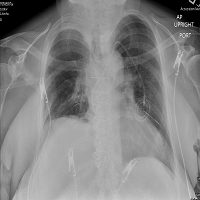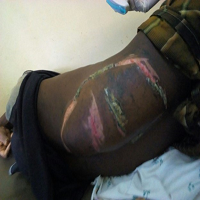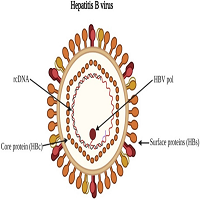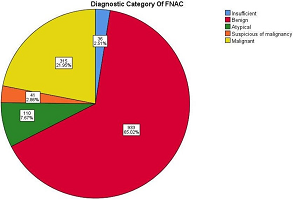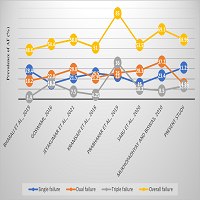1. Patil SU, Schreffler WG. Novel vaccine: Technology and development. J Arllergy Clin Immunol. 2019; 143: 844-851. doi: 10.1016/j.jaci.2018.05.021
2. Lollini PL, Cavallo F, Nanni P, Forni G. Vaccines for tumor prevention. Nat Rev Cancer. 2006; 6: 204-216. doi: 10.1038/nrc1815
3. Boukhebza H, Bellon N, Linhacher JC, Inchauspe N. Therapeutic vaccination to treat chronic infectious diseases. Hum Vaccin Immunother. 2012; 8: 1746-1757. doi: 10.4161/hv.21689
4. Guo C, Manjili MH, Subjeck JR, Sarkar D, Fisher PB, Wang XY. Therapeutic cancer vaccines: Past, present and future. Adv Cancer Res. 2013; 119: 421-475. doi: 10.1016/B978-0-12-407190-2.00007-1
5. Vandeborne L, Pantziarka P, van Nuffel AMT, Bouche G. Repurposing infectious disease vaccines against cancer. Front Oncol. 2021; 11: 688755. doi: 10.3389/fonc.2021.688755
6. Morales A. Adjuvant immunotherapy in superficial bladder cancer. Natl Cancer Inst Monogr. 1978; 49: 315-319.
7. Geizhals S, Lebwol MG. Successful treatment of multiple cutaneous malignancies with HPV vaccination. Case report. SKIN The Journal of Cutaneous Medicine. 2020; 4: 148-155. doi: 10.25251/ skin.4.2.9
8. Khansari N. Dendritic cell vaccine and its application in cancer therapy. Int J Vaccines Vaccin. 2015; 1: 1-5. doi: 10.15406/ijvv.2015.01.00002
9. Smith AJ, Oertle J, Warren D, Prato D. Chimeric antigen receptor (CAR) T cell therapy for malignant cancers: Summary and perspective. J Cell Immunother. 2016; 6: 59-68. doi: 10.1016/j.jocit.2016.08.001
10. Kailshiya C, Sharma HB, Kailshiya J. Telomerase based anticancer immunotherapy and vaccines approaches. Vaccine. 2017; 35: 5768-5775. doi: 10.1016/j.vaccine.2017.09.011
11. Liu MA. DNA vaccines: An historical perspective and view to the future. Immunol Rev. 2011; 239: 62-84. doi: 10.1111/j.1600065X.2010.00980.x
12. Farashi-Bonab S, Khansari N. Improving clinical efficacy of cancer vaccine using neoantigen identified in cancer patients. Vaccine & Vaccination Res. 2019; 4: 20-27.
13. Jain S, Venhataraman A, Wechsler ME, Peppad NA. Messenger RNA-based vaccines: Past, present, and future in the context of Covid-19 pandemic. Adv Drug Deliv Rev. 2021; 179: 14000. doi: 10.1016/j.addr.2021.114000
14. Kasherman L, Ahrari S, Lheureux S. Dostarlimab in the treatment of recurrent or primary advanced endometrial cancer. Future Oncol. 2021; 17: 877-892. doi: 10.2217/fon-2020-0655
15. Redman JM, Gibney GT, Atkine MB. Advances in immunotherapy for melanoma. BCM Med. 2016; 14: 20-31. doi: 10.1186/ s12916-016-0571-0
16. Keating GM. Panitumumab: A review of its use in metastatic colorectal cancer. Drugs. 2010; 28: 1059-1078. doi: 10.2165/11205090-000000000-00000
17. Greg LB, Figgitt DP. Rituximab. Drugs. 2012; 63: 803-843.
18. McKeage K, Pery CM. Trastuzumab: A review of its use in treatment of metastatic breast cancer overexpressing HER2. Drugs. 2002; 62: 209-243. doi: 10.2165/00003495-200262010-00008
19. Galizia G, Lieto E, De vita F, et al. Cetuximab, a chimeric human mouse anti-epidermal growth factor receptor monoclonal antibody, in the treatment of human colorectal cancer. Oncogene. 2007; 26: 3654-3660. doi: 10.1038/sj.onc.1210381
20. Kazazi-Hyseni F, Beijnen JH, Schellens JHM. Bevacizumab. Oncologist. 2010; 15: 819-820. doi: 10.1634/theoncologist.2009-0317
21. Cordo V, Van der Zwet JC, Cante-Barrett K, Pieters R, Meijerink JP. T- cell acute lymphoblastic leukemia: A road map to targeted therapies. Blood Cancer Discov. 2021; 2: 19-31. doi: 10.1158/2643- 3230.BCD-20-0093
22. Broccoli A, Argnani L, Zinzani PL. Peripheral T-cell lymphoma. Focus on novel agents in relapsed and refractory disease. Cancer Treatment Rev. 2017; 60: 120-129. doi: 10.1016/j.ctrv.2017.09.002

